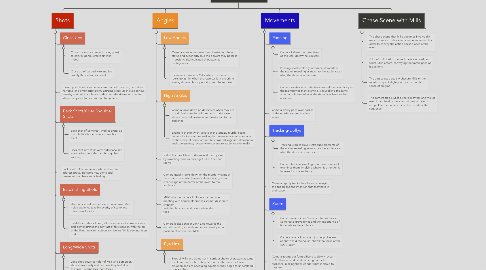
1. Shots
1.1. Close Ups
1.1.1. Close ups on key props (knives, guns) to convey genre, create sinister mood
1.1.2. Close up of barbed wire implies cruelty the vicitm has faced
1.2. Close up shots of faces convey emotion of character, help direct narrative and emphasise point. Extreme close up of eyes coneys severity and helps audience understand the drama or situation; also conveys reinforces emotion to audience
1.3. Back Shots/Over Shoulder Shots
1.3.1. Back shot of Somerset, implies anger as torch light silhouettes (can't see his face)
1.3.2. Back shot of victims wife; hides face and emphasises here despair through her sobbing
1.4. Back shot of Commissioner who is about to address press, indicates how alone and pressured the character is feeling
1.5. Estbalishing Shots
1.5.1. Used at second murder scene, looks over Mills, helps audience take in severity of scene and introduces location
1.5.2. Establishing shot of field, allows audience to take in scene and demonstrates the contrast of this location with the dn of the film; the warm colours symbolise film is coming to an end
1.6. Long/Wide Shots
1.6.1. Long shot down corridor of Mills and Somerset, shows how lonely and helpless they feel about the case,; symbolises there lack of understanding
1.6.2. Wider shots help establish the scene, and reveals details that are vital for audience's decoding of the narrative
1.7. Static Shots
1.8. Limited field of the shot results in audience only being able to see small parts of whole setting, making them as informed as the detectives;slowly revealed as detectives piece together the crime
1.9. Shots of elements such as murder victims or word SLOTH, helps convey themes of the narrative
1.10. Shot-reverse shot uses static shots when characters are in conversation
1.11. Frequent use of many, quick static shots e.g. In chase scene. Emphasises movements and expressions of the character more
1.12. Deep Focus
1.13. Used in conversations between characters, in order to draw detail to the person who is speaking when two people are in the same shot
2. Angles
2.1. Low Angles
2.1.1. Camera looks up at detectives, illustrating there status and superiority due the powers they possess in society; also indicates characters as protagonists
2.1.2. Example shown with Mills, where the camera looks up at him when the reporter is in the crime scene, showing his superiority over the reporter
2.2. High Angles
2.2.1. Camera looks down on detectives when they are in a difficult situation with regards to the case; shows there helplessness and frustration to the audience
2.2.2. Example shown when Mills is at the GREED murder scene, camera looks over him, making him seem very small compared to the scene of horror around him, symbolising his helplessness and cluelessness; reveals whole scene to audience eventually
2.3. Helps illustrate ideas of the several deadly sins by revealing more details e.g. GREED murder scene
2.4. Camera usually looks down on the murder victims at the crime scene, which reveals details and gives a clear image of the horror of the event to the audience
2.5. Mills' wife has camera look down at her when meeting with Somerset; emphasises her desperate situation with her husband and how useless she feels
2.6. Camera looks down at John Doe towards the end of the film; shows how he has developed a position of power over Mills
2.7. Eye Line
2.7.1. Shot of Mills and Somerset in corridor shows characters at same level; symbolises how they are both in the same helpless situation and are becoming equals as they begin to understand one another
3. Movements
3.1. Panning
3.1.1. Camera follows the detectives as the walk downy he sidewalk
3.1.2. Panning used to slowly introduce elements of the scene, revealing as much to the audience as what the detectives can see
3.1.3. Camera rotates with detectives around the dead body in the mortuary as they examine it, reveallling the same amount of information as the detectives have to the audience
3.2. Camera slowly pans over bodies of the murder victims at crime scene
3.3. Tracking/Dollys
3.3.1. Tracking used to slowly introduce elements of the scene, revealing as much to the audience as what the detectives can see
3.3.2. Camera tracks across fingerprints as Somerset examines them, implying where his attention is focussed to the audience
3.4. Camera rapidly tracks the officers, conveying the speed and the intention that they have in their pace
3.5. Zoom
3.5.1. Camera zooms in on Somerset to emphasise Somerset's grave tones and the importance of his words to the audience
3.5.2. Camera zooms in on door just as police are about to raid the house, shows the focus of the SWAT team
3.6. Camera zooms out form officers to slowly reveal SLOTH scene and create an enigma for the audience, making them wonder what is about to happen
3.7. Tilts
3.7.1. Reveals the character of Somerset by slowly titling camera towards his features, builds elements of mystery around the character
3.7.2. Camera tilts with Somerset as he speaks
